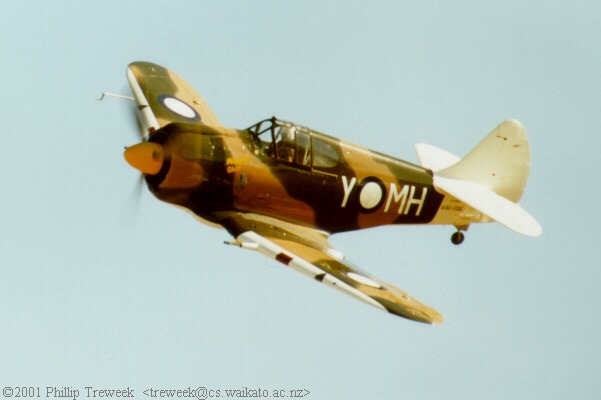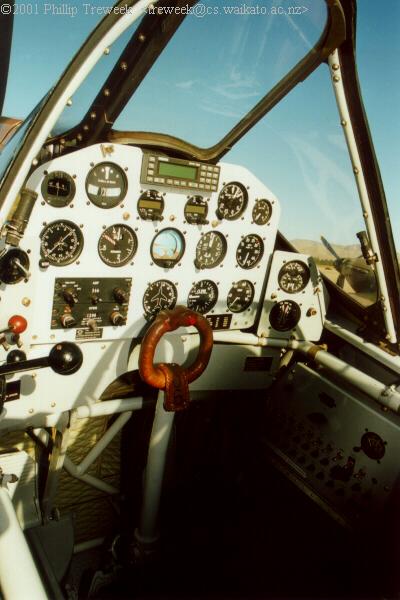Sounds like a nifty feild defence fighter or de-acker. Or worse, competition for the Brewster as the most irritating sneeky littel peice of so and so in the game.
Australian War Memorial Collection of Photos.
http://www.awm.gov.au/search/collections/?mode=advanced&q=Boomerang+aircraft&terms=phrase&field=related_subjects_text---------------------------------------------------------------------
From: CAC Boomerange Home Page -
http://cacboomerang.com.au/Fred David worked in Germany with Heinkle and then in Japan with Mitsubishi and Aichi in so he had an intimate knowledge of then current cutting edge technology. The Boomerang was designed and flew inside 16 week and 4 days (first flight 29 May 1942) this is a record. The fighter was an exceptionally tough and maneuverable aircraft at low level, well-armed with 2 cannon and 4 machine guns and was easy to maintain. Although its performance over 15,000 feet was only average the fighter was a match for most contemporary fighters under that height. The Boomerang was in the event not required to perform its designed task of interceptor due to the large scale availability of the Curtiss P40 and Supermarine Spitfire. The rugged structure of the Boomerang , its ease of maintenance, low level maneuverability and good armament however assured it of a pre-eminent role as a ground attack and Army support aircraft and it went on to serve with distinction with 7 RAAF Squadrons (2,4.5,83,84,85 and 8 Sqns) throughout the War. It was not required to tackle enemy aircraft but the RAAF took a heavy toll of Japanese ground forces. Ground crews were very impressed with the aircraft and serviceability was high. The pilots had a very high respect for the Boomerang and its ability to absorb damage and bring them home.
And HTC is halfway there. Look we already have that gunsight in the game......
From a New Zealand sight with great pictures of a restored Boomerang. Check out the photo gallery on the WEB page.
http://www.kiwiaircraftimages.com/boomer.htmlLike many aircraft initially considered less than successful, the Boomerang found its niche in another roles - particularly army cooperation and ground attack. The sparkling low level performance of the Boomerang combined with a tough structure was ideal for this alternate role. 4 and 5 Squadrons operated the Boomerang in Papua New Guinea and the Solomon Islands. In the tactical role, as well as strafing (armament being four .303 machine guns and two 20mm cannon) the aircraft were also used for artillery spotting and close support, and 'FAC' type work marking targets. It is in this later role that the type became well known to some New Zealand pilots. The 'Smokey Joes' used four 9kg (20lb) smoke bombs carried under the centre section to mark targets for RNZAF Corsair fighter-bombers. The aircraft could also carry up to a 227kg (500lb) bomb on the centreline. Other operations, like convoy patrol were common. A number of aircraft were written off in training and many operational losses were in crashes and landing incidents. The latter reflect the nature of the airstrips being used. The aircraft were often stripped of parts and subsequently dumped. One (A46-88) was shot down by US ground fire, and another (A46-136) was damaged in an attack by a P-38 flown by Lt G.R. Johnson. One aircraft from 5 Squadron RAAF (A46-189) was lost when it crashed on the target while marking it during an operation with 24 Squadron RNZAF Corsairs .

 The Pilots Manual - http://www.avialogs.com/list/item/883-raaf-257-the-boomerang-interceptor-aircraft-operating-instructionsFrom the Manual.
The Pilots Manual - http://www.avialogs.com/list/item/883-raaf-257-the-boomerang-interceptor-aircraft-operating-instructionsFrom the Manual.Reading from the manual seems the Aussies used the MkII gunsight but, had their own twist on the reticle.
1. 100Mil main ring.
2. 50Mil secondary to range 30-40 ft wingspan at 300 yards. Wow sounds like a Mk9 reticle.

